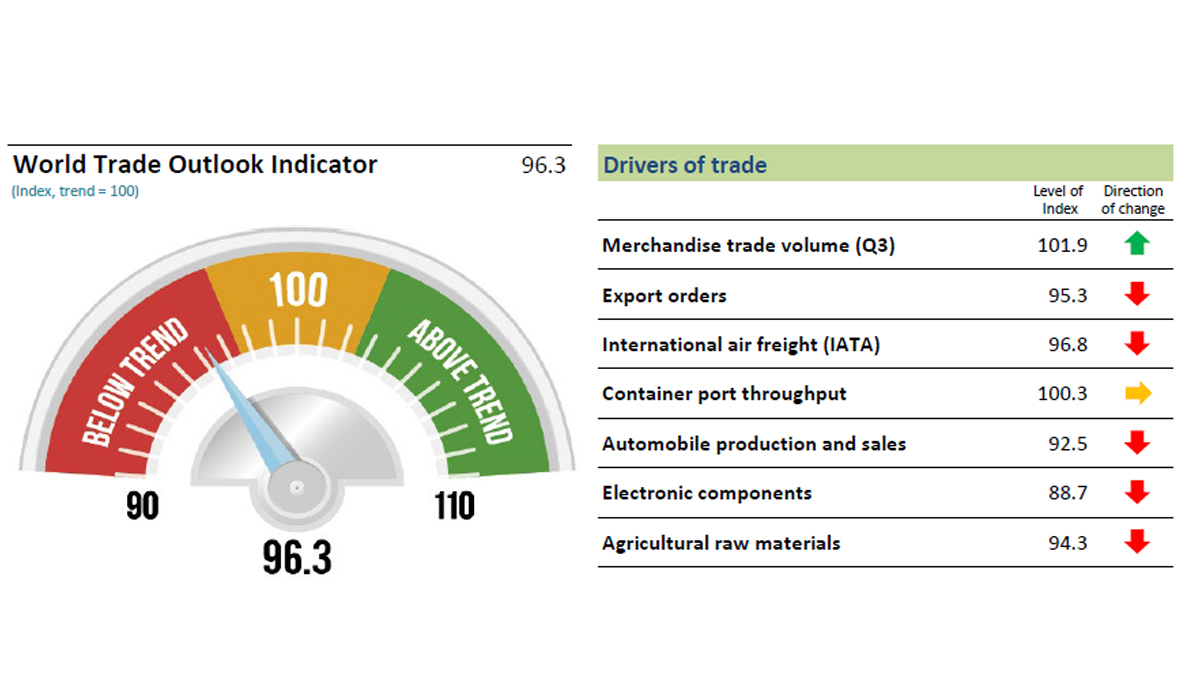WTO trade indicator points to slower trade growth into first quarter of 2019
Feb 20, 2019
Trade weakness is likely to extend into the first quarter of 2019, according to the WTO’s latest World Trade Outlook Indicator (WTOI) released on 19 February. The simultaneous decline of several trade-related indicators should put policy makers on guard for a sharper slowdown should the current trade tensions remain unresolved.

The most recent WTOI reading of 96.3 is the weakest since March 2010 and below the baseline value of 100 for the index, signalling below-trend trade expansion into the first quarter. Weakness in the overall index was driven by steep declines in the component indices, which appear to be under pressure from heightened trade tensions. Indices for export orders (95.3), international air freight (96.8), automobile production and sales (92.5), electronic components (88.7) and agricultural raw materials (94.3) have shown the strongest deviations from trend, approaching or surpassing previous lows since the financial crisis. Only the index for container port throughput remained relatively buoyant at 100.3, showing on-trend growth.
Temporary factors may have influenced some of the indices. Front-loading of imports ahead of anticipated US-China tariffs may have sustained container shipping to some extent, while technical problems in the German automotive sector may have contributed to weakness in automobile production and sales. It should be noted that below-trend growth in an index does not necessarily imply a decline in the underlying data.
This sustained loss of momentum highlights the urgency of reducing trade tensions, which together with continued political risks and financial volatility could foreshadow a broader economic downturn. The WTO downgraded its trade forecast last September amid escalating trade disputes and tighter credit market conditions. Trade growth is currently forecast to slow to 3.7% in 2019 from an expected 3.9% in 2018, but these estimates could be revised downward if trade conditions continue to deteriorate. Nevertheless, greater certainty and improvement in the policy environment could bring about a swift rebound in trade growth.
Designed to provide "real time" information on the trajectory of world trade relative to recent trends, the WTOI is not intended as a short-term forecast, although it does provide an indication of trade growth in the near future. It aims to identify turning points and gauge momentum in global trade growth. As such, it complements trade statistics and forecasts from the WTO and other organizations. Readings of 100 indicate growth in line with medium-term trends; readings greater than 100 suggest above-trend growth, while those below 100 indicate below trend growth.
The full World Trade Outlook Indicator is available here.
Further details on the methodology are contained in the technical note here.
Source: World Trade Organization (WTO)